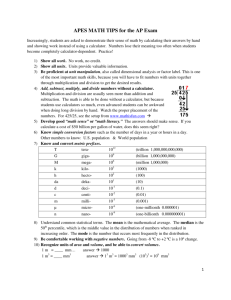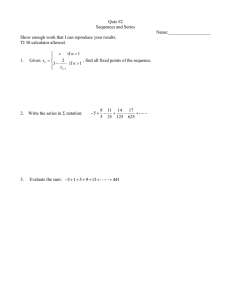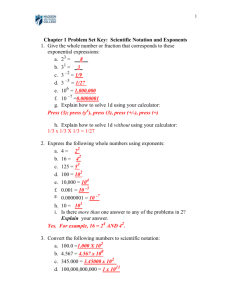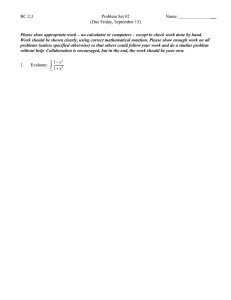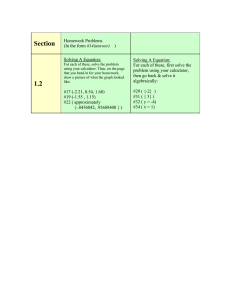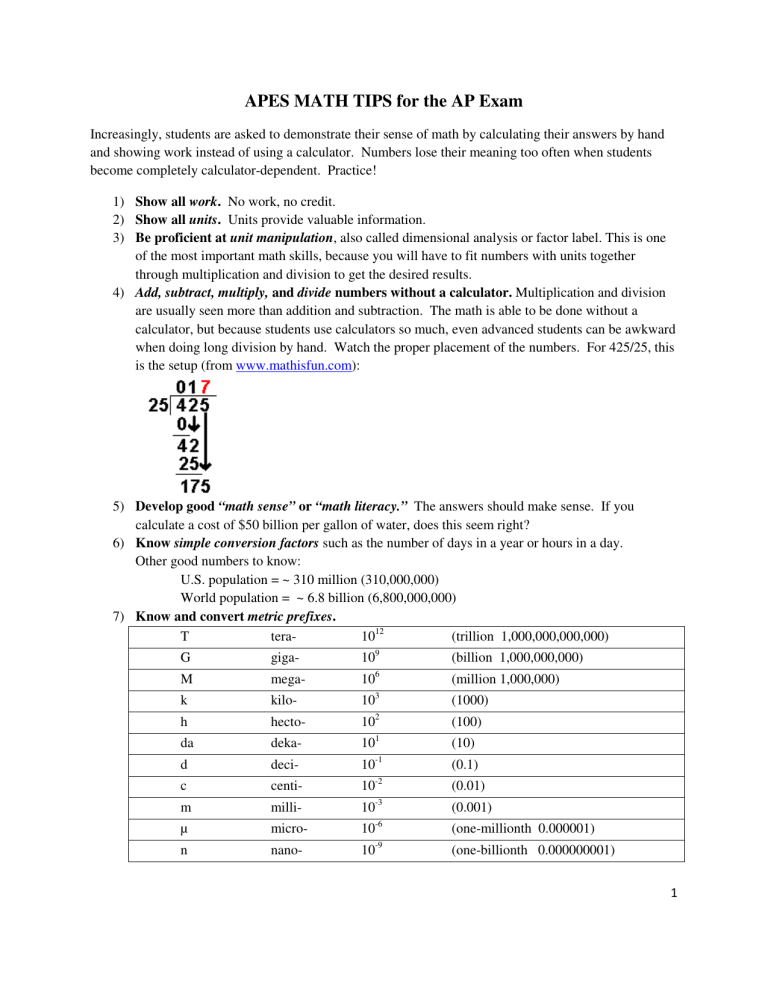
APES MATH TIPS for the AP Exam Increasingly, students are asked to demonstrate their sense of math by calculating their answers by hand and showing work instead of using a calculator. Numbers lose their meaning too often when students become completely calculator-dependent. Practice! 1) Show all work. No work, no credit. 2) Show all units. Units provide valuable information. 3) Be proficient at unit manipulation, also called dimensional analysis or factor label. This is one of the most important math skills, because you will have to fit numbers with units together through multiplication and division to get the desired results. 4) Add, subtract, multiply, and divide numbers without a calculator. Multiplication and division are usually seen more than addition and subtraction. The math is able to be done without a calculator, but because students use calculators so much, even advanced students can be awkward when doing long division by hand. Watch the proper placement of the numbers. For 425/25, this is the setup (from www.mathisfun.com): 5) Develop good “math sense” or “math literacy.” The answers should make sense. If you calculate a cost of $50 billion per gallon of water, does this seem right? 6) Know simple conversion factors such as the number of days in a year or hours in a day. Other good numbers to know: U.S. population = ~ 310 million (310,000,000) World population = ~ 6.8 billion (6,800,000,000) 7) Know and convert metric prefixes. T tera1012 (trillion 1,000,000,000,000) G M k h da d c m µ n gigamegakilohectodekadecicentimillimicronano- 109 (billion 1,000,000,000) 10 6 (million 1,000,000) 10 3 (1000) 10 2 (100) 10 1 (10) 10 -1 (0.1) 10 -2 (0.01) 10 -3 (0.001) 10 -6 (one-millionth 0.000001) 10 -9 (one-billionth 0.000000001) 1 8) Understand common statistical terms. The mean is the mathematical average. The median is the 50th percentile, which is the middle value in the distribution of numbers when ranked in increasing order. The mode is the number that occurs most frequently in the distribution. 9) Be comfortable working with negative numbers. Going from -8 ºC to +2 ºC is a 10º change. 10) Recognize units of area and volume, and be able to convert volumes. 1 m = ____ mm… answer 1000 3 3 1 m = ____ mm answer 13 m3 = 10003 mm3 (103)3 = 109 mm3 For area conversions, square the number, square the unit. For volume conversions, cube the number, cube the unit. 11) Calculate percentages. Example: 80/200 = 40/100 = 0.4 = 40% 12) Put very large or very small numbers into scientific notation. 310,000,000 = 310 million = 310 x 106 = 3.1 x 108 0.000 000 000 000 097 = 9.7 x 10-14 13) Work scientific notation problems without a calculator. Multiplication and division will be common. Multiplying numbers in scientific notation requires the exponents to be added. Dividing numbers in scientific notation requires exponents to be subtracted. 14) Know growth rate calculations. Growth rate = [CRUDE BIRTH RATE + immigration)] – [(CRUDE DEATH RATE + emigration)] (see 2003 FRQ #2) CBR = crude birth rate = # births per 1000, per year CDR = crude death rate = # deaths per 1000, per year (CBR – CDR) / 10 = percent change 15) Calculate percent change: a) The rate of change (percent change, growth rate) from one period to another = [(Vpresent - Vpast) / Vpast] * 100 (where V = value) b) Annual rate of change: take answer from step a) and divide by the number of years between past and present values Example: A particular city has a population of 800,000 in 1990 and a population of 1,500,000 in 2008. Find the growth rate of the population in this city: Growth Rate = (1,500,000 - 800,000) / 800,000 * 100 = 700,000/800,000 * 100 = 87.5% Average Annual Growth Rate = 87.5% / 18 years = 4.86 % 16) Know the Rule of 70 to predict doubling time. Doubling time = 70 / annual growth rate (in %, not decimal!) Example: If a population is growing at a rate of 4%, the population will double in 17.5 years. (70 / 4 = 17.5) 17) Calculate half-life. AMOUNT REMAINING = (ORIGINAL AMOUNT)(0.5)x where x = number of half-lives x = time / half-life + 18) Calculate pH using –log [H ]. Log10 x = y and 10y = x. Any pH problems are easily solved without a calculator. Remember that for every one-increment change in pH, the ions change by a factor of 10. Example: If [H+] is 10-6 M, the pH is 6 and the solution is a weak acid. 19) Know that “per capita” means per person; per unit of population. 20) Graphing tips: include a title and key; set consistent increments for axes; connect dots; interpolate and extrapolate; be comfortable with graphing by hand. 2
